
The effect
The magician hands a normal playing card out for inspection. Taking it back, the magician suddenly begins to spin the card in thin air. It hovers in mid-air, then flies from hand to hand, floating through a circle formed by the magician’s arms. Finally, it floats entirely around the magician’s body. At the conclusion of the trick, the card is handed out for inspection.
The Secret
The magician controls the spinning playing card using invisible thread attached to the center of the card. The fiber is so slender that is it effectively invisible, yet strong enough to withstand a great deal of use. Specifically, the way the card is hooked to the magician enables great flexibility in the range of tricks performed with the floating card.
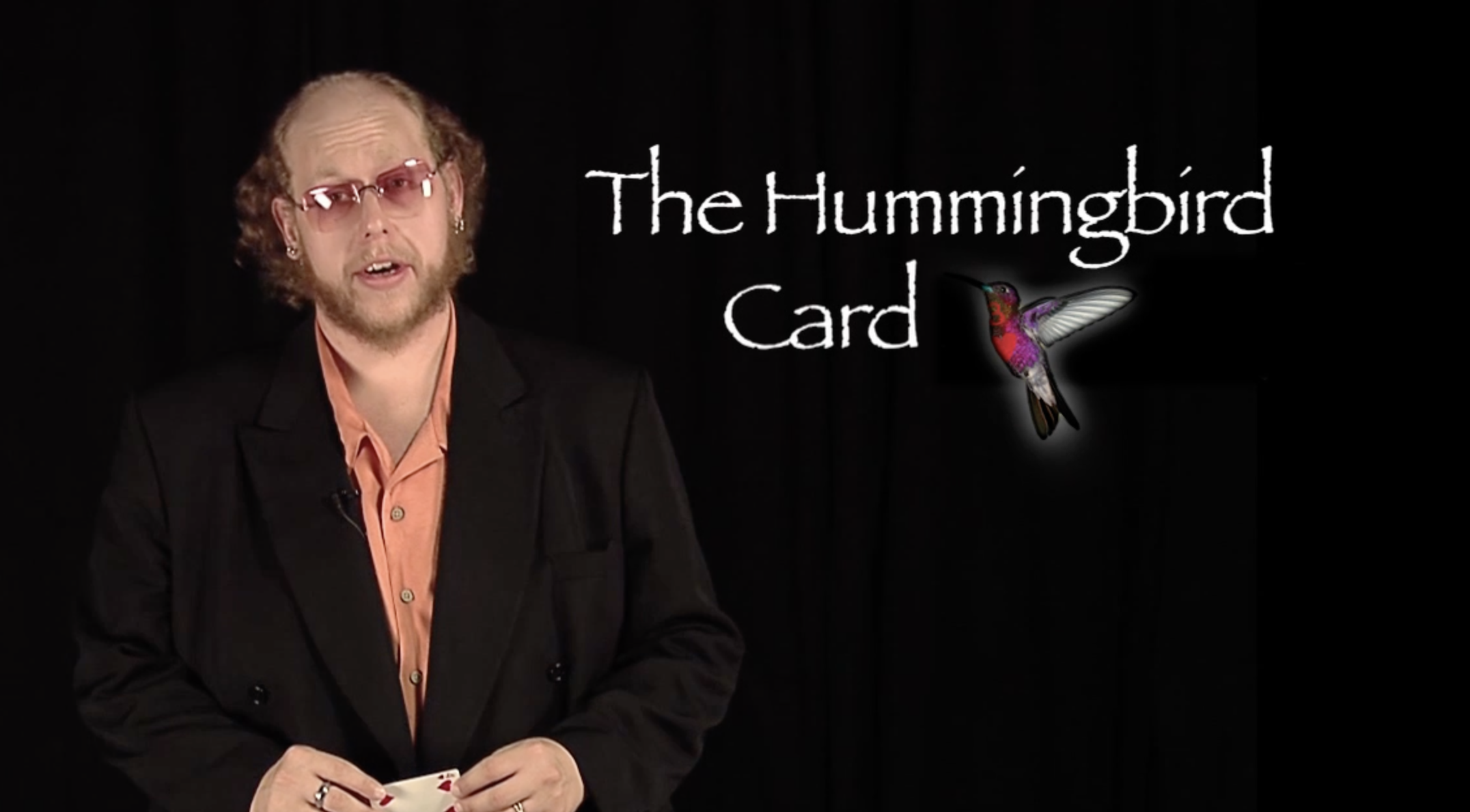
Preparing the Invisible String:
The invisible string arrives wrapped around a holder designed for easy handling. Multiple strands are woven into a single string. In order to use the string, we must pull a single strand from the string.
Step 1: Unroll
Unroll approximately four to five feet of string.
Step 2 : Grasp
Grasp the string near the end using your left hand.
Step 3 : Separate
Separate a single strand and begin to pull it from the string by pinching it between the thumb and forefinger of the right hand. It may help to keep track of the string by performing this work over a white background.
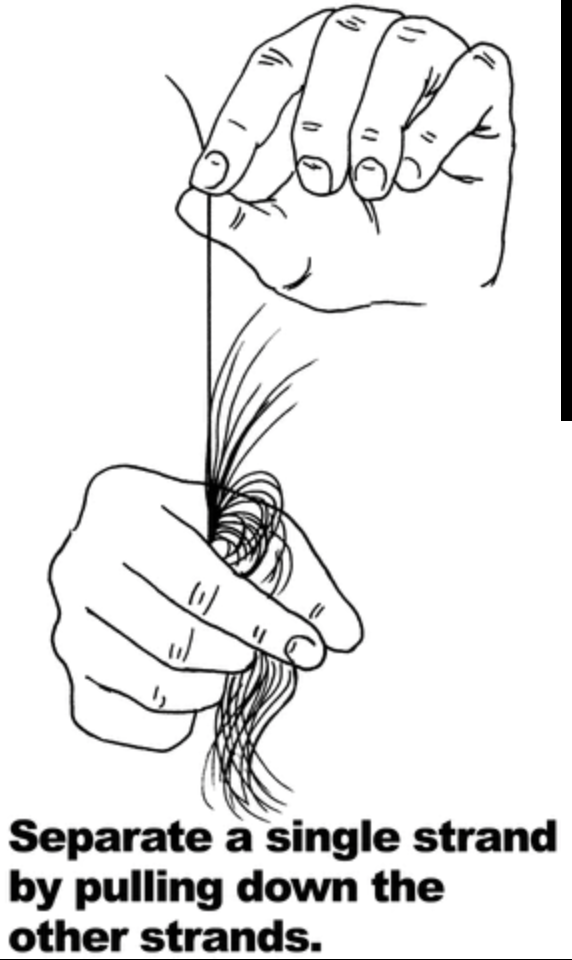
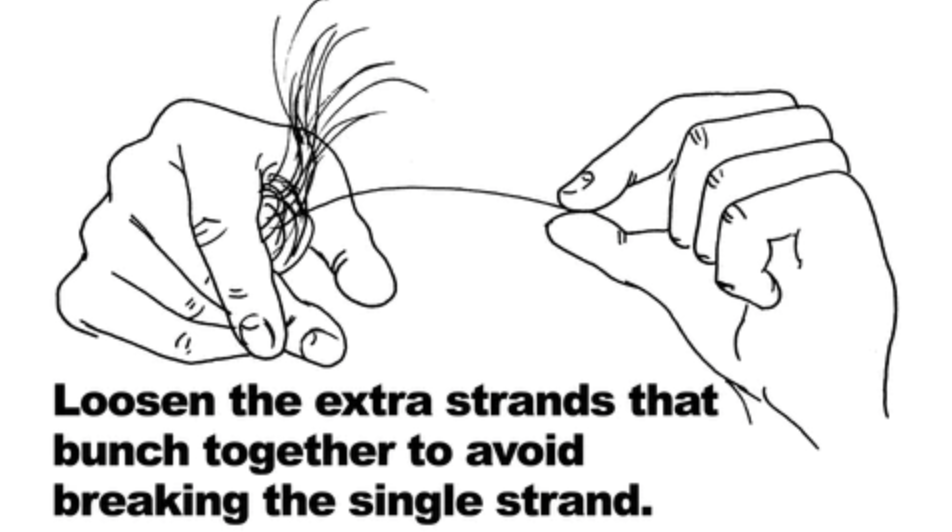
Step 4 : Loosen
As the strand resists being pulled, loosen the grip with your left hand and push down lightly on the mass of strands. This will release more of the single strand that you are pulling from the string. If you continue to pull against resistance, you may break the single strand you are extracting.
Step 5: Anchor
Anchor the strand to a work surface using scotch tape. This helps you keep track of the strand, which may otherwise ‘accordion’ to a shorter length and become hard to manage.
Step 6: Extension
Continue gently pulling the strand followed by pulling down the bunched strands below until you have released roughly five feet of string. Cut the strand at this point and attach a small piece of magician’s wax to this end of the strand.
Step 7 : Rewind
Don’t forget to rewind the remainder of the string for later use.
Step 8: Length
The length of strand required to most effectively perform the trick will vary depending on your height and preferences. In most cases, you will find that the proper length can be determined by measuring from the tip of your outstretched fingers to the center of your chest. Test several lengths until you find one with which you are most comfortable. Cut the strands at this length and move on to the next step;
The Setup
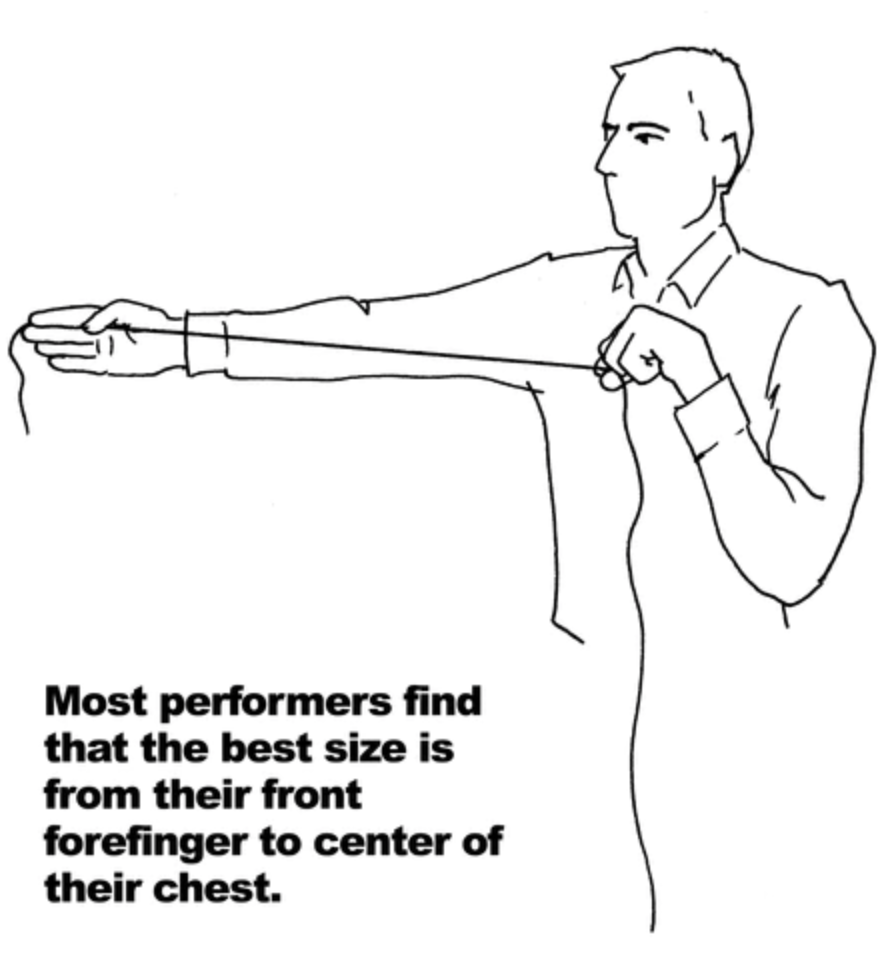
The Setup
Setting up the Hummingbird Card could not be much easier. With a prepared length of string, your only need is to attach one end to the back of your ear, and attach the other to a shirt button in preparation for the trick.
Step 1: Behind The Ear
Attach the non-waxed end of the strand to the back of your ear using scotch tape. For the greatest ease of performance, choose the ear opposite from your dominant hand. For example, if you are right-handed, place the string behind your left ear.
Step 2: The Other End
Attach the other end of the strand to an easy reference point on the front of your body, such as a button. You’ll find that with little practice, it is easy to walk around normally with your strand setup.
The Performance
Step 1: Fingernail Setup
Immediately before performing the trick, slip waxed end of the strand underneath a fingernail from its current attachment to your button (or other attachment location).
Step 2: Examination
Present the playing card to the audience for examination. I like to say at this point, “I have a pet hummingbird. Would you like to meet it?”. The audience will naturally smile, and wonder why you are handing them a playing card. If they ask, I typically say, “Well, let me show you”. I then take back the card and prepare for the next step.
Step 3: Attachment
I make a point to ‘pat’ the back of my ‘hummingbird’, cooing pleasantly to it. In so doing, I attach the waxed end of the string approximately in the center of the card. By now the audience is very curious about what you’re doing. Some are, by now, looking around for the men in white suits they expect to come take the magician away.
Step 4: Launch.
“My little hummingbird is a little shy…sometimes I have to give it a little push”. Spin the card energetically so that it rotates around the string in the center. It is best if the card is given sufficient energy to continue spinning on its own for approximately 45 seconds. With practice, you should be able to spin it so that it continues for over a minute. This will significantly improve the appearance of the trick, as soon as the card stops spinning it may become obvious that it is dangling from a string.

The Perfect Launch.
The perfect launch is critical for a professional performance. It starts with the correct body posture. Lean into the card, bending slightly at the waist, leaving room between the card and your body at approximately waist level. The farther the card is away from your body, the less likely spectators will think that the card is somehow attached to your body.
Hold the card in your right hand like a frisbee, placing your thumb on top and your forefinger extended along the short end of the card. It is usually most comfortable to catch the end of the short edge with the tip of your forefinger. This provides superior grip to ensure a good spin. When you spin the card, pull your hand back in a sweeping motion toward your body and inward, rotating around the invisible axle of the strand attached to the center of the card. Remember to avoid actually pulling the card back toward your body; spin it around its own center.
The misfire, i.e. the wounded hummingbird..
Many magicians first attempting the trick try to throw the card forward like a frisbee. If you don’t want to look like you’ve abused your hummingbird, remember that while you grasp the card like a frisbee, you are not throwing it, but rather spinning it. A perfect spin should leave the card spinning largely motionless in mid-air. If it moves away from your body at all, you have probably failed to perform a good spin.
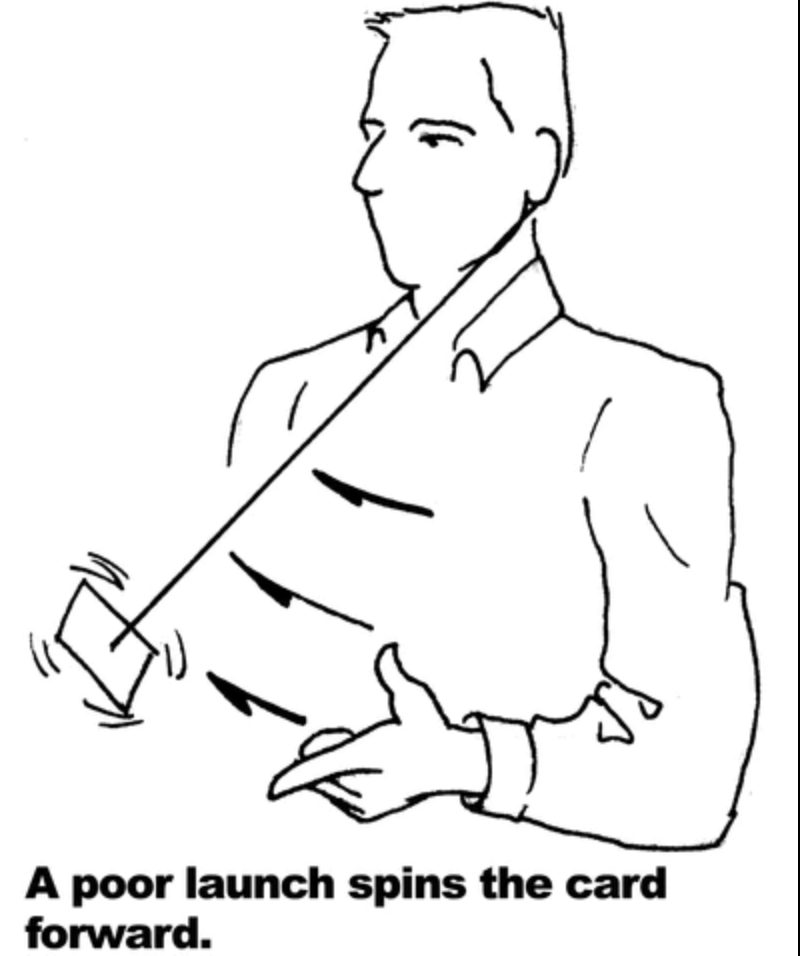
Step 5: Hand to hand.
Once you have mastered the spin, you should practice spinning the card from hand to hand. A proper hand to hand pass should result in the card arching smoothly from one hand to the other. To the audience it will appear that the card is defying gravity with each smooth pass. Master the hand to hand before integrating the later moves described below.
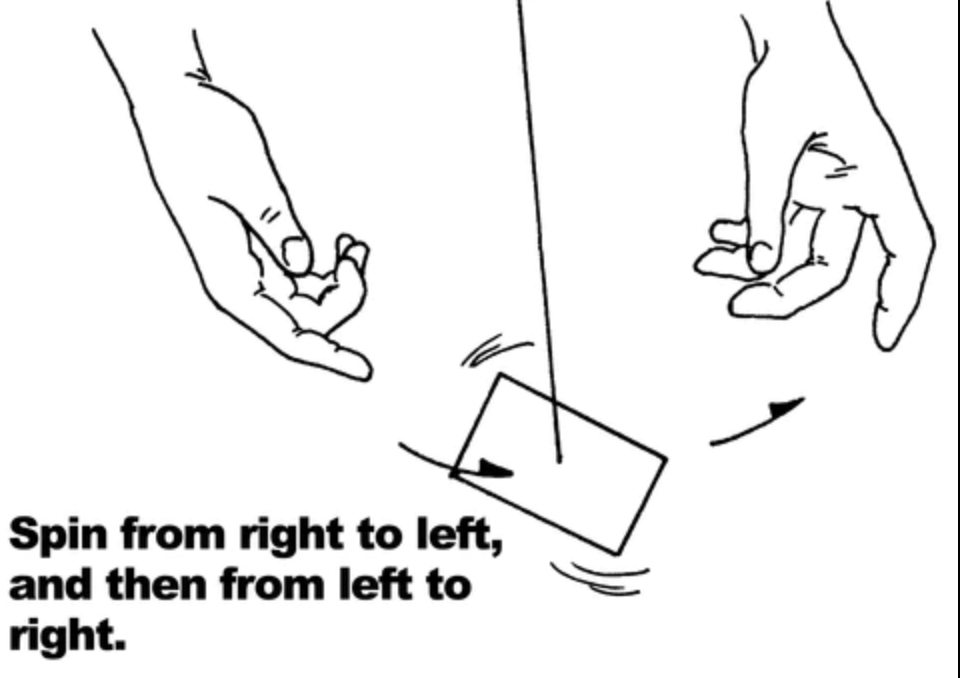
Step 6: Control
Once the card is spinning, you will want to assume control of your “hummingbird”. Mentally picture the straight line between your ear and the center of the card. Extend all of your fingers, and in particular separate your thumb and forefinger. Sweep that hand smoothly across the estimated path of the strand, trying to capture the strand in the crotch of the hand. Avoid quickly closing the thumb and forefinger around the string. Instead, slow deliberate pressure and a natural relaxation of the hand should leave you in control of the strand, and thus the card.
Now moving your hand will move the card in any direction. When you move the card, it is best to move your entire body as if following the movement of the card. Imagine that the hummingbird is hovering before you, occasionally fluttering in unforeseen directions.
Step 7: Floating hand to hand
Now you can begin practicing floating the card control from hand to hand in addition to actually flipping the card from hand to hand. Gently swing the string from one controlled hand toward another to assume control. If properly done, this can give the impression that there really is no attachment of the card to any part of your body. Generally, the more the card moves, the more believable the illusion is.
Step 8: The Palm Flutter
One of the most effective moves you can perform with the card is to bring it up closely beneath your fingers and meanwhile raise your other hand below it. This gives the impression that it is impossible for the card to be attached to anything. To accomplish this move, maneuver the strand between the first two fingers of your hand, passing over the back of your hand and down between the fingers. Slowly push your hand forward, causing the card to rise. As it rises to within a few inches of the hand above, bring the other hand in palm up from below to frame the card. It appears impossible that any string or attachment could be involved in completing this trick.
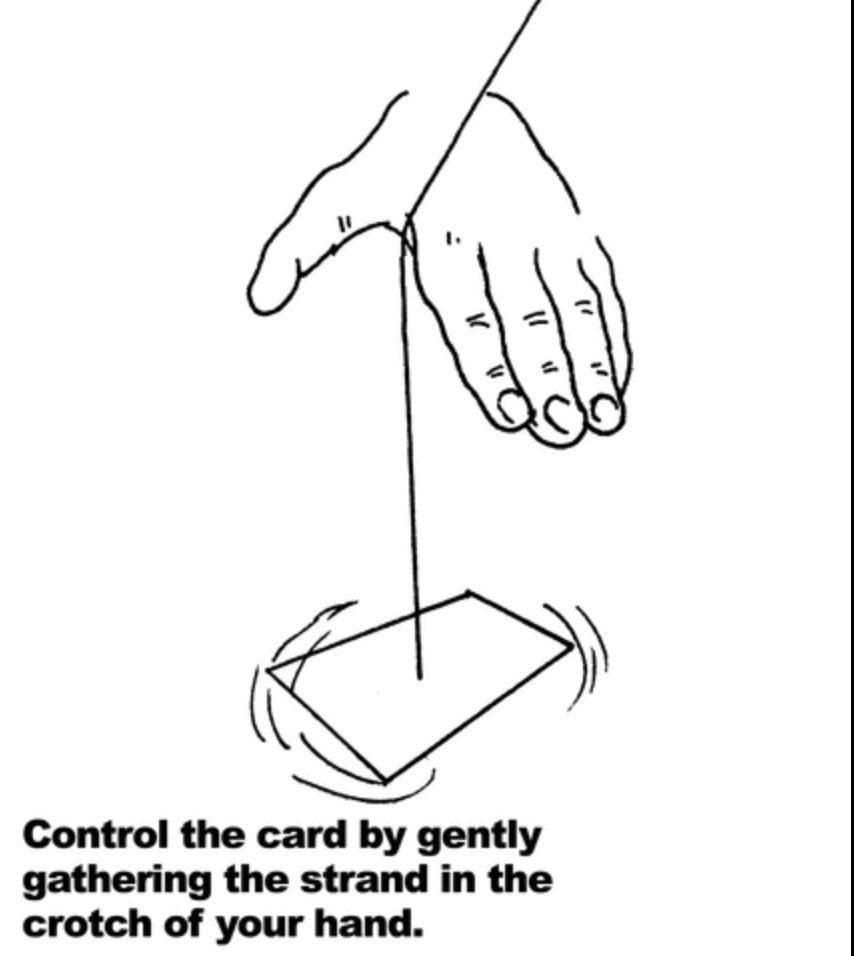
Step 9: The Arm Ring
You can send your hummingbird fluttering through a circle formed by your arms to further reinforce the belief that the card cannot be attached to anything. Your audience will drop their jaws in disbelief as you perform this maneuver.
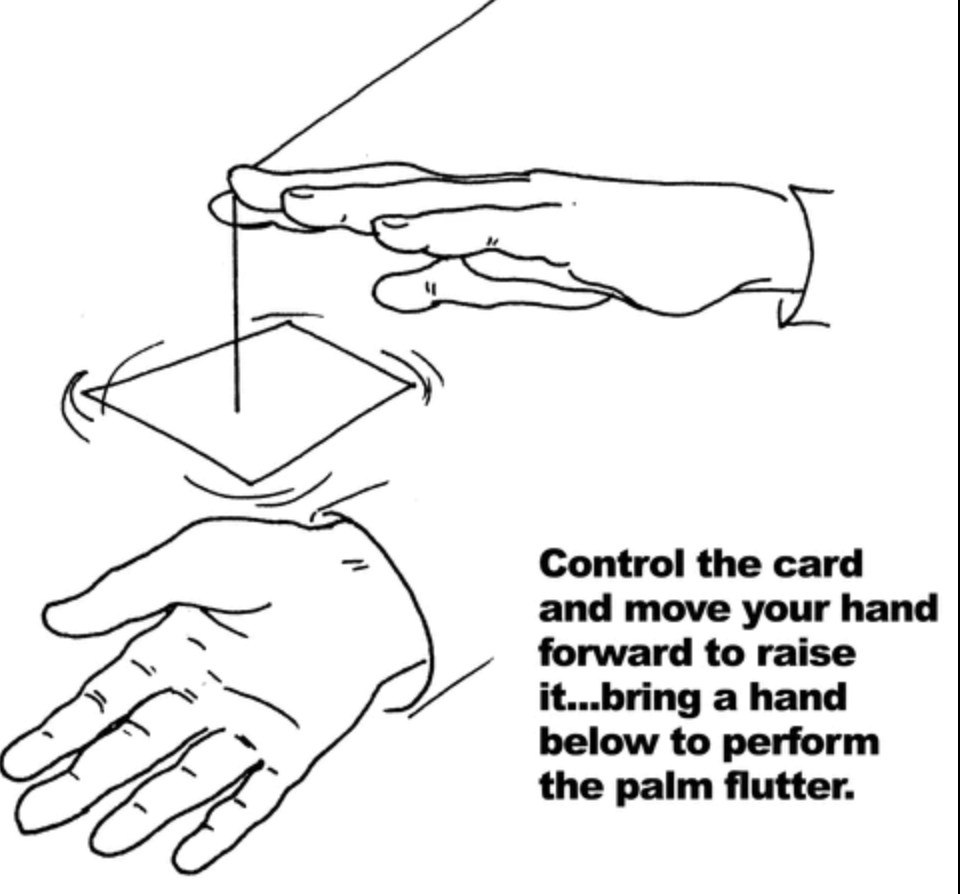
Begin this move by assuming control of the string in the crotch of you hand, this time with your left hand. While the card is still spinning, bring the fingers of your two hands together, creating a horizontal ring with your arms. Slowly and smoothly rotate the ring of your arms to vertical by raising your left arm while lowering your right arm. The strand will be hooked over your left thumb. The card will spin up through the moving ring your arms. Ensure that the meeting of your hands is on the upper side of the ring to leave room for the spinning card to pass over your right arm. Complete the maneuver by separating your hands to permit the completion of a loop by the card. It’s a good idea to repeat this arm ring using the other hand to give the impression that the card passed through the arms both ways. To accomplish this, simply reverse the moves described about by passing control to the right hand.
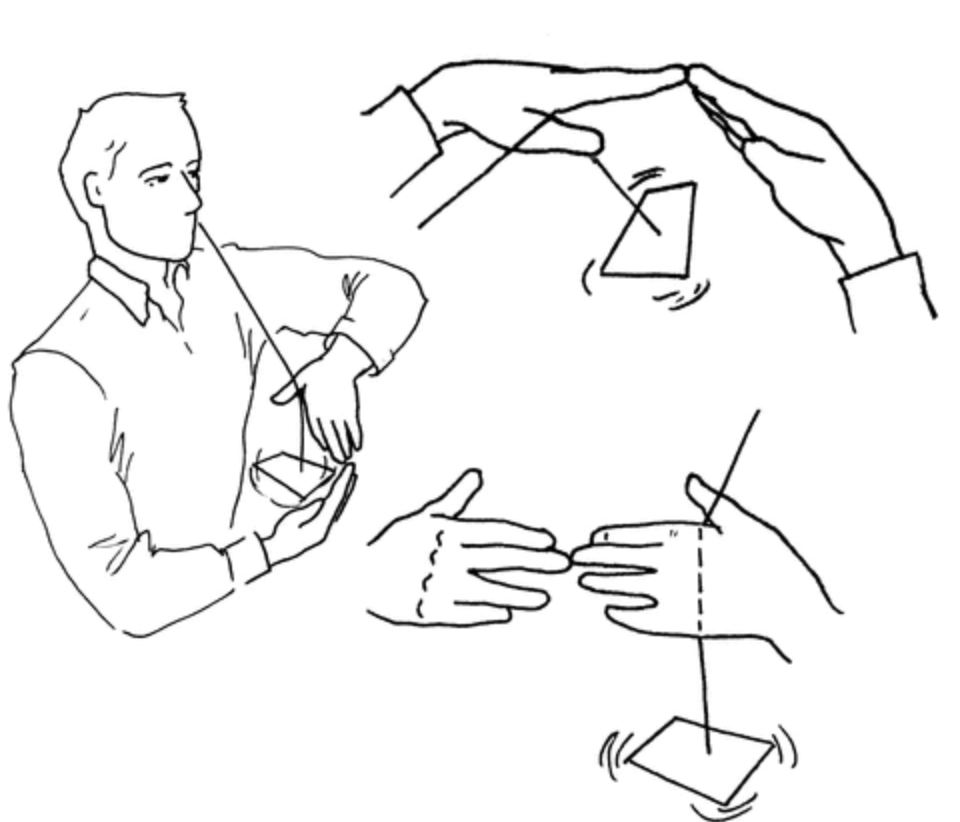
Step 10: Advanced Arm Ring.
The advanced arm ring requires more practice than the standard arm ring, but presents a more impressive appearance to the audience because the card swings farther away from the body and through the looped arms.
Start by clipping the strand between the middle two fingers of your right hand. Tilt your right arm over the card and slightly down. Bring your left fingers up below the card to form a loop with your arms as you begin to swing the spinning card around your fingertips, passing outside and then through the loop of your arms. The card will rotate around an axle formed by the vertical fingers of both hands; the right pointing down and left pointing up. End the maneuver by catching the card with your right hand. Your audience will be truly amazed, determined that there is no way for the card to be attached to a string.
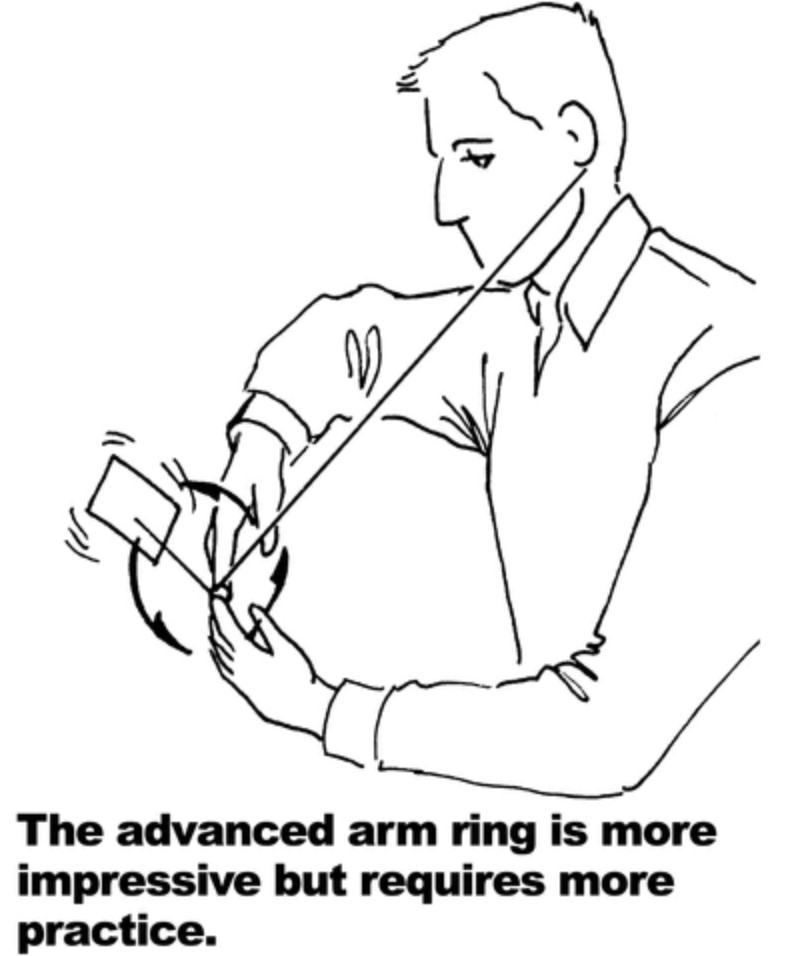
Step 11: The body flutter.
This amazing spectacle sends the spinning card completely around your body. The spectators will absolutely not believe that this is possible, yet they will witness it before their very eyes.
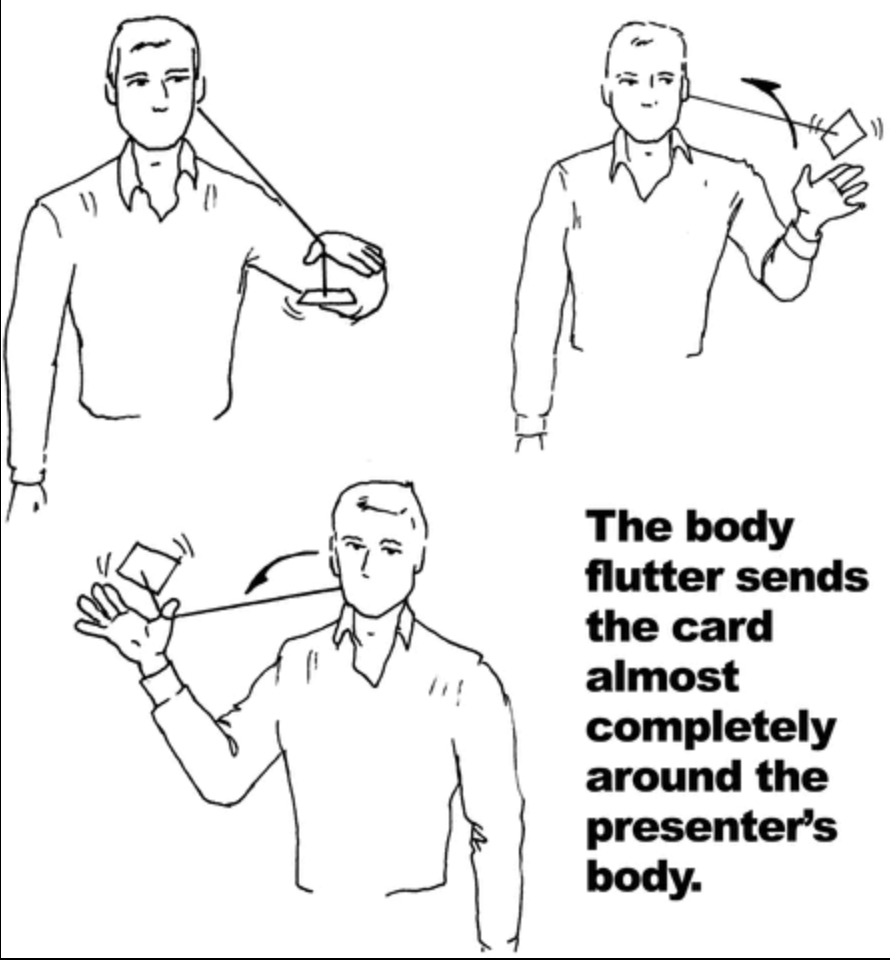
Start this maneuver by giving the card an energetic spin. Take control of the card with your left hand by placing the strand in the crotch of your hand. Toss the card around the back of your body past the left shoulder first, and then around to the right shoulder where you will take control of the strand with the crotch of your right hand. The critical component of a successful body flutter is to use your head and body to swing the card around your body. It is not sufficient the throw the card around your body. You must also assist with your head and body to ensure complete and smooth travel.
Once you have control of the card with your right hand, you will flutter the card back around to the left side of your body. Repeat the previous toss back to the left hand, unwinding the string from your neck and preparing for the completion of the trick. Again, remember to assist with your head and body to ensure smooth and complete travel.
Step 11: Examination.
Complete the trick by capturing the card in your hand. Rub the ‘hummingbird’s’ back to reward it for a job well done. In doing so, remove the magician’s wax from the back of the card. Hand the card back to the audience for examination. While they focus on the card, you can easily reattach the strand to your button in preparation for performing the trick again.
Here are some tips for ensuring a most successful performance.
- Always keep the card in motion
- Transition from move to move smoothly to ensure that it looks as if there is no way the card could be attached to an invisible string
- If the card stops spinning, grab it with your hand and give it another spin


